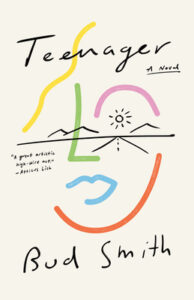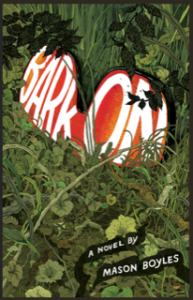Nonfiction. 172 pgs. Ice Cube Press. October 2020. ISBN: 978-1-948509-20-6.
I have a confession to make. I’ve lived in Iowa my whole life, and I’ve never been caucusing. Not once. Not only have I never attended a caucus, but I really have no idea how they work. I’m just as clueless as residents of other states who look upon the Iowa caucus as an esoteric, almost mystical process, one that’sunnecessarily complicated in comparison to the more straightforward primary voting of, say, South Carolina. When I hear the word caucus, I imagine the caucus race from Alice in Wonderland where dozens of animals scurry around in a nonsensical competition where nobody wins and the rules are obscure if they exist at all, which, as the nation learned from the 2020 primary debacle, might not be that far from the truth.
In his book, The Last Caucus in Iowa, Jim O’Loughlin documents his first-person experience of the pandemonium that was the 2020 caucus. Over the course of the election season, he attended political gatherings for more than twenty of the Democratic candidates who threw their hats into the ring, many of whom he met and spoke with directly. In an approachable blend of reporting and personal essay, O’Loughlin casts himself as tour guide, leading the reader behind the scenes of the Iowa caucus from the campaign events all the way to the night of the caucus. Alongside in-the-moment observations recorded at the time of the events, the book also includes the author’s personal on-site photos. Peppered with jokes, O’Loughlin presents the information in an easily digestible format and conveys the chaos, excruciating boredom, excitement, surprise, and occasional inspiration rendered by the Iowa caucus.
I read this book not only after the primary elections were finished but after Biden was determined the election winner, dozens of painstaking recounts later. I finished the book after the attacks on the Capitol, my mind reeling from fear and despair at what was occurringright there on my screen. From the get-go, it was clear this election would not be easy, and yet I was shocked just the same. I was interested in returning to the beginning of the election, the Iowa caucus, and asking, as O’Loughlin phrases it, “What the hell happened?” (162). Typically, the results of each district are tallied that night and announced prior to the New Hampshire primary, but due to technical difficulties with the shady app, the 2020 Iowa caucus results were delayed for an unprecedented six days. How did this happen? And most of all, did this debacle set the tone for the rest of the grueling election we’ve all been struggling to process these past three months?
O’Loughlin’s book originally began as a topical blog, but with tumultuous current events rolling forward at a break-neck pace every day, the contents of the book already smack with the flavor of history and reflection. As the chapters were originally entries in a serialized online format, they were written at or immediately after the timein which O’Loughlin experienced them, unfiltered by hindsight. The chapters are bookended by an Introduction and Conclusion that provide the contextualizing results that we know now. Because of this juxtaposition between before and after, The Last Caucus in Iowa presents a unique vantage point that other texts that rely on recollection might not have. Reading O’Loughlin’s in-the-moment observations made me feel like I was in on a dangerous little secret, like I was a visitor from the future watching the present play out likea film whose ending had been spoiled. As our tentatively optimistic nation moves into the beginning of the Biden presidency, I’m tempted to reflect back on the past election season and search for specific points at which the fate of the election was sealed, and The Last Caucus in Iowa offers up a raw, minimally altered record for the reader’s examination.
A transplant from New England who has resided in Iowa for a couple decades now, O’Loughlin is a unique narrator for a book on the Iowa caucus, because he straddles that fiddly line between outsider and native. His perspective grants him the credence to astutely describe and explain the Iowa caucus while contextualizing just how bizarre the whole thing really is. Though he doesn’t attempt to make oversimplified, one-to-one comparisons between Iowa and his East Coast background, he does chart notabledifferences in culture, many of which I, as a native Iowan, hadn’t considered. For example, in the chapter dedicated to forgotten presidential hopeful Joe Sestak’s appearance at the Black Hawk County Democratic party headquarters, O’Loughlin gently ribs Sestak for dressing a little too casual. When I look at the black-and-white photo of Sestak included in the chapter, I see a dress shirt tucked into jeans, the sleeves rolled up to the elbows, attire that I’d certainly consider casual but not necessarily schlubby. O’Loughlin describes the “come-as-you-are” fashion sensibilities of Iowa, a consequence of rural farming traditions where after working long hours it felt unnecessary to take extra time to dress up. Though O’Loughlin marks this as a cultural quirk unique to the Midwest, he does so without a value judgment, noting, “Now, don’t get me wrong, in many ways this is part of Iowa’s unpretentious charm, and I like that clothing isn’t necessarily a status symbol here. I’m a beneficiary of this when I realize, ‘no, I don’t have to iron anything today.’ But there are some occasions that might seem to call for dressing as if you took your situation seriously, such as when running for President” (89). O’Loughlin speculates that Sestak’s casual clothing is clearly part of his strategy to appear approachable and down-to-earth to Iowa constituents, but he suggests Sestak might have missed the mark and, as a result, presented himself as less professional than other contenders. These small, nuanced details about the candidates are the kind that are missed when you watch media coverage of the caucus. By focusing on these gut observations from first-hand experience, O’Loughlin provides a more accurate picture of what a voter sees, ingests, and thinks about these politicians, thereby carving a niche for The Last Caucus in Iowa.
Alongside these notes about candidates’ respective strategies and presentation, O’Loughlin gives the reader a look into the different kinds of campaign events one might see on the caucus trail. If you onlywatch the news, you might come away thinking thatcampaigns follow a homogenized format and tone: large event centers featuring the candidate on stage giving a lengthy speech about their policy views, and then, maybe, a Q and A portion after. I was surprised that a good number of campaign events are much smaller and simpler, with regular people often volunteering their homes for intimate meet-and-greets or gatherings that feel more like cocktail parties. O’Loughlin makes a point to paint a clear picture of the space, tone, and important logisticsof these events (if food was served, how long the attendees had to stand and wait before the event began, proximity to a localethat serves half-decent coffee); he attends everything from large rallies in Des Moines (Elizabeth Warren) to enthusiastic clusters in backyards (Pete Buttigieg) all the way to the living room of a house outside Cedar Rapids (Julián Castro). The space can dictate the tone and relative success of an event, and some proved to be more chaotic than others. For example, in Cedar Falls at a house party featuring California U.S. RepresentativeEric Swalwell, O’Loughlin writes of the ambiance, “People brought their small children with them, and kids ran around throughout the whole event. In fact, at one point a toddler brought conversation to a standstill by running into the room and announcing that he had just pooped. We were glad for him” (37-38). O’Loughlin’s observations are rendered with a wry but warm humor that adds a dash of humanity to politics, a field that, more often than not, feels cold and soulless.
While I enjoyed reading The Last Caucus in Iowa, I came away with questions about the medium in which the information was presented. The book was originally a topical blog that O’Loughlin updated as the campaign season went on, and I question how successfully it translates into a form with more permanence, like a physical book. Whereas a blog can accommodate video and audio recordings, as well as color pictures, the book format limits what material can be used (the book is chock fullof photos, but they’re rendered in black-and-white, with some of the details difficult to see.) The book is certainly enjoyable, in large part because O’Loughlin is genuinely funny, but it does read very much like a blog, and though the contemporaneous observations are part of the book’s charm, I’m left wondering whether or not the project would have benefited from more reflection peppered in rather than just at the beginning and end.
Despite my questions aboutthe form, The Last Caucus in Iowa isan informative and enjoyable read, and it gives any political junkie a first-hand account of the anxiety-inducing2020 Iowa caucus event. After the reporting issues, several groups have called for a reexamination of the caucus process and perhaps anentireoverhaul. The Lastin the titleof the book has, as O’Loughlin notes, two meanings: the most recent, or the final. Everything about the democratic process – everything from the caucus to term limits to the electoral college— is currently being subjected to some much overdue criticism; it’s not unfathomable that this might be, indeed, the final caucus in Iowa, and if that’s the case, it has been appropriately and pleasantlymemorialized within the pages of this book.
The Last Caucus in Iowa is available through Ice Cube Press. Purchase it now through their website.
JEN CORRIGAN is a prose writer who lives in Iowa. Her work has appeared or is forthcoming in Salon, Catapult, Literary Hub, Prairie Schooner, Electric Literature, and elsewhere. Visit her at www.jen-corrigan.com.
Like what you’re reading?
Get new stories or poetry sent to your inbox. Drop your email below to start >>>
OR grab a print issue
Stories, poems and essays in a beautifully designed magazine you can hold in your hands.
GO TO ISSUESNEW book release
China Blue by Catherine Gammon. Order the book of which William Lychack Jeffries calls “a fiery declaration of all that is inexpressible about desire and loss and the need to find a home in a world in which even the most solid and real of things feel often less than completely solid or real.”
GET THE BOOK



